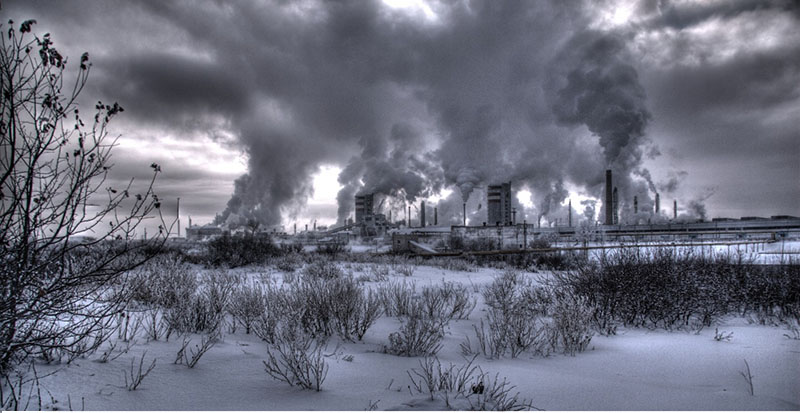|

What is nuclear winter?
Carl Sagan,
and other authors introduced the idea of "Nuclear
Winter" in a 1983
scientific journal article (Science, Dec. 1983, pg. 1283).
In the theory
of Nuclear Winter,
after the explosions of a nuclear exchange have died down
- the
spread of smoke, soot and debris in the atmosphere
from nuclear-started fires, could
absorb sunlight, darken the sky and ultimately lower the
temperature of the
Earth from 1 to 5 degrees Centigrade within a few months,
which
could unbalance the ecosystem and affect the
survival of many species on Earth, including the extinction
of mankind.
back

The
idea of the effects of too much smoke in the sky are not
just an idle theory either - something similar may have
already happened in the Earth's past, at the end of the
Cretaceous period some 65 million years ago.
In 1979, a researcher named
Walter Alvarez
was sifting through
sediments from Gubbio, Italy when he discovered a surplus
of a radioactive element - known as
iridium -
in sediments dating back to the boundary between the
Cretaceous and Tertiary periods (called the K-T
boundary). This
iridium
did not have an easy terrestrial explanation.
Alvarez's research gave support to an already
proposed
asteroid theory of dinosaur
extinction that
figures in many modern sci-fi films. This theory suggests
that a
large meteorite
hit the Earth around 65 million years ago, causing fires.
This meteor would explain the
iridium
deposits and the fires would explain a surplus of carbon
that has also been discovered at the K-T boundary layer.
Scientists know that iridium
is much more common in asteroids and meteors than it is on
Earth.
Other researchers studying
carbon deposits in sedimentary layers have documented a
period in Earths past when
ancient wildfires were widespread. Did these ancient
wildfires lead to the extinction of the Dinosaurs?
Fossils in the sediments in the K-T boundary also show a
strange disappearance of about 50 percent of the genera in
this period of time.
These ancient fires may provide evidence from
Earth's past that give us an idea of how a nuclear war
climate might affect the climate. It would be hard to
prepare for the striking of an asteroid, though in
Hollywood films mankind always gets together to defeat
even such a random event.
And no
experimentation on Nuclear Winter has been done,
and hopefully won't be done.
BACK
University
of Miami Home Page
| Biology Home
Page | Dr.
Mallery's Home Page | On-Line
Testing Center.
copyright
c2013,
Charles
Mallery, Department of Biology, University of Miami,
Coral Gables, FL 33124
Last
Update -
03/03/2016
|

